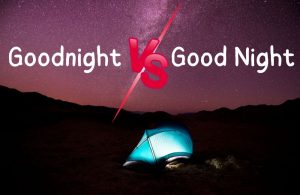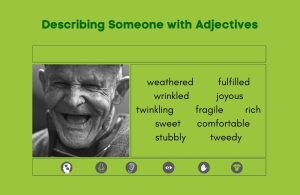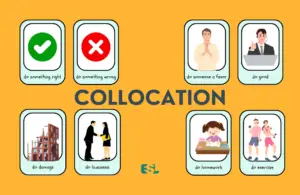Language is essential to understanding and discussing different aspects of culture, including films and literature. The terminologies used in these artistic disciplines can be intricate, as they are deeply intertwined with numerous cultural references, contexts, and artistic expressions.
This article will delve into various sections of vocabulary commonly associated with films and literature to help you better understand and appreciate these cultural forms.
To elevate your vocabulary in just 30 days, I recommend to my students an informative, fun, and accessible guide to utilizing powerful language. Millions of individuals have enhanced their academics, job skills, and confidence by dedicating just fifteen minutes daily to the exercises and tests of 30 Days to a More Powerful Vocabulary (Amazon Link), a top-selling. It offers step-by-step methods to bolster language prowess, discover compelling words, and daily vocabulary enhancement with pronunciation guidance.
Table of Contents
- 1. Basic Film Vocabulary
- 2. Advanced Film Terminology
- 3. Basic Literature Vocabulary
- 4. Advanced Literature Vocabulary
- Sample Conversation: Using Vocabulary for Film and Literature
- In Conclusion
- FAQ: Vocabulary for Film and Literature
1. Basic Film Vocabulary
Let’s start with the basics. Here are some common terms used in discussing films, from basic narrative elements to types of shots.
| Word/Phrase | Meaning/Usage | Example Sentences |
|---|---|---|
| Genre | A category of artistic composition | “The movie belongs to the horror genre.” |
| Plot | The sequence of events in a movie | “The plot of the film was full of unexpected twists.” |
| Characters | People represented in a film | “The main characters in the movie were very well developed.” |
| Dialogue | Conversation between characters | “The dialogue was witty and entertaining.” |
| Close-up | A type of shot that tightly frames a person or an object | “The director used a close-up to capture the actor’s emotions.” |
| Scene | A part of a film presenting continuous action in one place | “The beach scene was beautifully shot.” |
| Sequence | A series of scenes that form a distinct narrative unit | “The chase sequence was particularly exciting.” |
| Flashback | A scene set in a time earlier than the main story | “The flashback revealed the protagonist’s past.” |
| Soundtrack | The recorded music accompanying a film | “The film’s soundtrack was very moving.” |
| Cinematography | The art of photography and camera work in filmmaking | “The cinematography of the film was stunning.” |
2. Advanced Film Terminology
Here are some more specialized terms for those looking to delve deeper into film critique or filmmaking.
| Word/Phrase | Meaning/Usage | Example Sentences |
|---|---|---|
| Montage | A method of editing that involves presenting a series of short shots to condense space, time, and information | “The montage of her growing up was very touching.” |
| Mise-en-scène | The arrangement of scenery and stage properties in a play or film | “The mise-en-scène in every frame was meticulously planned.” |
| Voiceover | A piece of narration in a film not accompanied by an image of the speaker | “The film used voiceover to provide background information.” |
| Diegetic sound | Sound whose source is visible on the screen or whose source is implied to be present by the action of the film | “The sound of the car in the background is an example of diegetic sound.” |
| Non-diegetic sound | Sound that can be heard by the audience only, not the characters | “The suspenseful music is an example of non-diegetic sound.” |
| Film Noir | A style or genre of cinematographic film marked by a mood of pessimism, fatalism, and menace | “The detective movie was a classic example of film noir.” |
| Tracking shot | Any shot where the camera follows backward, forward or moves alongside the subject being recorded | “The tracking shot followed the actor down the alley.” |
| Auteur | A filmmaker whose personal influence and artistic control over a movie are so significant that they are regarded as the author of the movie | “He is considered an auteur because of his unique style and thematic consistency across his films.” |
| Cliffhanger | A situation in a plot that leaves the audience in suspense at the end of an episode | “The season finale ended on a cliffhanger.” |
| MacGuffin | An object or device in a movie or a book that serves merely as a trigger for the plot | “The mysterious briefcase in the movie is a MacGuffin.” |
3. Basic Literature Vocabulary
Now let’s look at some basic words commonly used when discussing literature.
| Word/Phrase | Meaning/Usage | Example Sentences |
|---|---|---|
| Protagonist | The main character in a literary work | “The protagonist of the novel is a young detective.” |
| Antagonist | The character who opposes the protagonist | “The antagonist in the story is a powerful witch.” |
| Setting | The time and place of the action in a work of fiction | “The setting of the book is a small town in the 1900s.” |
| Plot | The sequence of events in a book | “The plot of the novel was very complex.” |
| Theme | The main idea or underlying meaning of a literary work | “The theme of the book revolves around love and loss.” |
| Point of View | The perspective from which a story is told | “The story is told from the point of view of the protagonist.” |
| Metaphor | A figure of speech that makes a comparison between two unrelated things | “The author uses a lot of metaphors in her writing.” |
| Symbolism | The use of symbols to represent ideas or qualities | “The recurring red color in the novel is a symbolism for danger.” |
| Foreshadowing | A hint of what is to come later in the story | “The storm in the first chapter was a foreshadowing of the tragedy that was to come.” |
| Conflict | A struggle between opposing forces, usually between the protagonist and antagonist | “The main conflict in the story is between the hero and the villain.” |
4. Advanced Literature Vocabulary
Here are some advanced terms for more serious students or lovers of literature.
| Word/Phrase | Meaning/Usage | Example Sentences |
|---|---|---|
| Allegory | A story, poem, or picture that can be interpreted to reveal a hidden meaning, typically a moral or political one | “Animal Farm is an allegory for the Russian Revolution.” |
| Allusion | An indirect reference to a person, place, thing or idea of historical, cultural, literary or political significance | “The author often makes allusions to Shakespeare’s works.” |
| Irony | A situation that is strange or funny because things happen in a way that seems the opposite of what you expected | “It was ironic that the fire station burned down.” |
| Juxtaposition | The fact of two things being seen or placed close together with contrasting effect | “The juxtaposition of the protagonist’s rich inner world and his mundane daily life was fascinating.” |
| Bildungsroman | A novel dealing with one person’s formative years or spiritual education | “The book is a bildungsroman of a young man growing up in rural Mississippi.” |
| Foil | A character who contrasts with another character, usually the protagonist, to highlight qualities of the other character | “The character of the cheerful best friend is a foil to the gloomy protagonist.” |
| Hyperbole | Exaggerated statements or claims not meant to be taken literally | “He uses hyperbole to emphasize the chaotic nature of the situation.” |
| Stream of consciousness | A method of narration that describes happenings in the flow of thoughts in the minds of the characters | “The novel uses stream of consciousness to depict the character’s inner turmoil.” |
| Tragicomedy | A play or novel containing elements of both tragedy and comedy | “His latest work is a tragicomedy about a man who accidentally becomes a hero.” |
| Verisimilitude | The appearance of being true or real | “The author’s detailed descriptions give a verisimilitude to the fantastical events in the novel.” |
If you are searching for an effective English language vocabulary builder, try Word Power Made Easy: The Complete Handbook for Building a Superior Vocabulary (Amazon Link). This time-tested classic has helped millions achieve mastery of English and improve their communication skills in business, the classroom, and in life.
Sample Conversation: Using Vocabulary for Film and Literature
Situation: At a book club meeting, Elena and Max discuss the influence of films and literature on understanding different cultures.
Elena: Hey Max, I was reflecting on how “genres” in literature and film offer unique insights into various cultures. For instance, the “noir” genre gives us a glimpse of post-war American urban life.
Max: Absolutely, Elena. And “epics” often delve into the historical and mythological roots of a culture, like Homer’s “Odyssey” for the Greeks or the “Mahabharata” for Indians.
Elena: True! “Biographies” and “autobiographies” also provide a personal perspective on cultural and historical events. I recently read a “memoir” of a woman from North Korea, and it was eye-opening.
Max: Literature does have that power. And in films, “cinematography” and “mise-en-scène” can convey cultural nuances without words. Think about the vibrant colors in Bollywood movies that reflect Indian festivities.
Elena: Right! “Screenplays” often adapt literary works, bridging the gap between readers and movie-goers. It’s fascinating how a “narrative” can transition from page to screen, yet maintain cultural essence.
Max: Agreed. Whether it’s through “prose,” “verse,” or “visual storytelling,” film and literature serve as cultural windows, giving us a richer understanding of the world.
In Conclusion
The language of films and literature is rich and full of nuances. Understanding these key terms can greatly enhance your appreciation and understanding of different works of art. This collection of terms is just a starting point, and there’s a whole universe of more specialized and complex terminology out there. So, keep reading, watching, learning, and expanding your cultural vocabulary!
FAQ: Vocabulary for Film and Literature
1. What are “genres” in literature and film?
“Genres” refer to specific categories or styles within literature and film that have distinct characteristics, such as mystery, romance, or science fiction.
2. What is the “noir” genre known for?
The “noir” genre, often associated with crime dramas, is known for its cynical characters, stark lighting, and intricate plots, often reflecting the societal challenges of post-war America.
3. How do “epics” contribute to cultural understanding?
“Epics” are long narrative works, often rooted in ancient oral tradition, that depict heroic deeds and events. They offer insights into the historical, moral, and cultural values of a society.
4. What differentiates “biographies” from “autobiographies”?
While both are accounts of a person’s life, “biographies” are written by someone other than the subject, whereas “autobiographies” are written by the person themselves.
5. How does “cinematography” influence a film’s portrayal of culture?
“Cinematography” involves the techniques of capturing visuals on film, including shot selection, lighting, and camera angles. It can emphasize cultural aspects, like landscapes, attire, or rituals, shaping viewers’ perceptions.
6. What is “mise-en-scène” in the context of film?
“Mise-en-scène” refers to the arrangement of everything that appears in the frame – including actors, lighting, décor, props, and costumes. It’s crucial in conveying the cultural and temporal setting of a scene.
7. How does a “screenplay” differ from a book?
A “screenplay” is a written script for a film, including dialogues and directions for actors, while a book is a written narrative meant for reading, often with more detailed descriptions and inner character thoughts.
8. What is meant by “narrative” in literature and film?
A “narrative” refers to a structured account of events or a story. In literature, it’s the structured progression of a plot, and in film, it’s the sequence of events depicted on screen.
9. How do “prose” and “verse” differ in literature?
“Prose” is a form of written language that has a natural flow, often used in novels and short stories. In contrast, “verse” is written in metrical rhythm, typically seen in poems.
10. What role does “visual storytelling” play in films?
“Visual storytelling” involves conveying a narrative through visual means – like images, cinematography, and mise-en-scène – often complemented by dialogues and sound. It’s central to filmmaking, offering a sensory experience to viewers.






